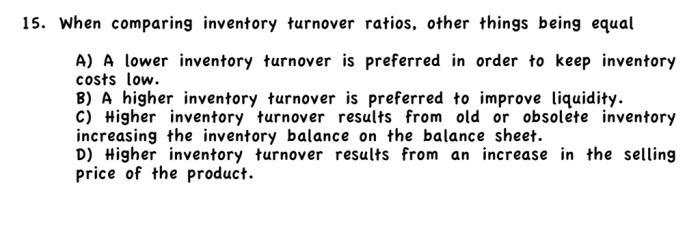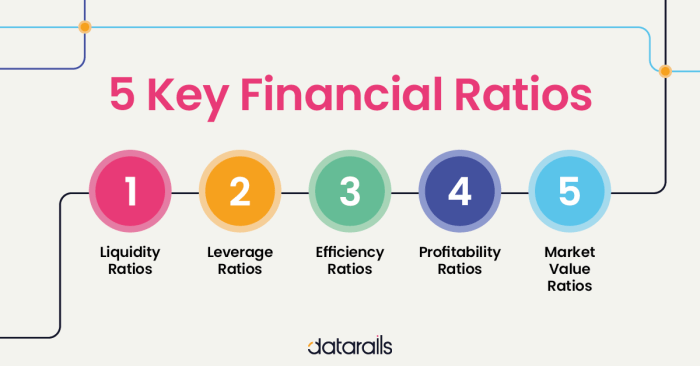When comparing inventory turnover ratios other things being equal – When comparing inventory turnover ratios, it is crucial to consider other factors to make meaningful interpretations and draw accurate conclusions. This comprehensive guide delves into the significance of inventory turnover ratios, the key factors that influence them, and industry benchmarks for optimal performance.
Understanding the impact of inventory turnover ratios on a company’s financial performance is essential for effective inventory management. By analyzing data and interpreting it correctly, businesses can identify areas for improvement and implement strategies to enhance their inventory turnover ratios, leading to increased profitability and efficiency.
Comparison of Inventory Turnover Ratios

Comparing inventory turnover ratios provides valuable insights into a company’s efficiency in managing its inventory. It allows for:
- Assessment of inventory management practices
- Identification of potential areas for improvement
- Benchmarking against industry peers and best practices
Factors Affecting Inventory Turnover Ratios
Key factors influencing inventory turnover ratios include:
- Sales volume: Higher sales lead to higher turnover
- Inventory levels: Lower inventory levels contribute to higher turnover
- Lead times: Longer lead times can result in lower turnover
- Seasonality: Seasonal fluctuations in demand can impact turnover
- Product mix: Products with higher demand and shorter lead times have higher turnover
Industry Benchmarks and Best Practices
Industry benchmarks for inventory turnover ratios vary depending on the sector and company size. Best practices include:
- Regular inventory audits and cycle counts
- Just-in-time (JIT) inventory management
- Vendor-managed inventory (VMI)
- Consignment inventory arrangements
Impact on Financial Performance, When comparing inventory turnover ratios other things being equal
Inventory turnover ratios directly impact financial performance by:
- Reducing inventory carrying costs
- Improving cash flow
- Boosting profitability
- Optimizing working capital management
Data Analysis and Interpretation
Analyzing inventory turnover ratios involves:
- Calculating the ratio using the formula: Cost of Goods Sold / Average Inventory
- Comparing the ratio to industry benchmarks and previous periods
- Identifying trends and anomalies
- Understanding the underlying factors influencing the ratio
Strategies for Improvement
- Reduce inventory levels through lean inventory management techniques
- Improve inventory forecasting accuracy
- Optimize lead times and supply chain efficiency
- Negotiate favorable payment terms with suppliers
- Implement inventory tracking and management systems
Commonly Asked Questions: When Comparing Inventory Turnover Ratios Other Things Being Equal
What are the key factors that affect inventory turnover ratios?
Key factors include sales volume, inventory levels, cost of goods sold, and inventory holding costs.
How can I improve my inventory turnover ratio?
Strategies include reducing inventory levels, increasing sales volume, and optimizing inventory management processes.


